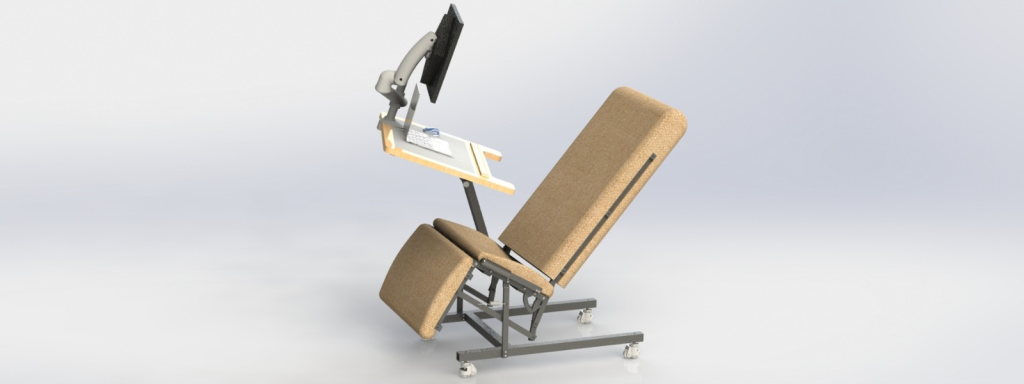Team Members

Jason Baterna, Cole Burgess, Thomas Eggers, Griffin Goldstein, Joseph Hill, Dylan Leong, Dean Quilon, Madysen Wiley
Abstract

The average chair and desk setup for professional settings do not have sufficient ergonomic
accommodations for long term use. While zero-gravity workstation products exist to solve these problems, they are exorbitantly priced and introduce problems that might discourage their use. The design solution, Leander, is a zero-gravity workstation that aims to provide an optimized ergonomic solution at an affordable price. It features a compact design, an easy-to-use mechanical reclining mechanism, an OTS (off the shelf) monitor mount that supports many degrees of freedom of adjustability, and a desk with a wrist bump and magnetic sheet to hold magnetic peripherals when reclined. The reclining mechanism employs two extension springs and a handle released ratchet mechanism. The desk, manufactured in Douglas Fir, is attached to the right side of the chair. It features a hinge giving it external rotation to improve the user’s ability to get in and out of the chair with ease. The OTS monitor choice enables the user’s mounted monitor to be put in any position within the length of the arm. All these features are mounted on an A-36 steel frame that provides the necessary material strength at a low cost. The group persisted throughout development to ensure affordability was the main objective as that would be Leander’s competitive advantage. It is challenging to design a product as capable but significantly cheaper than its competitors, but Leander’s total costs including manufacturing costs, material costs, and assembly costs totaled just over $1,500 — around $1,000 cheaper than its nearest competitors. However, Leander is not perfect; given more time to develop the team would fix some simple concerns about the initial design such as resistance to buckling, pinch points, corrosion resistance, and assembly improvements. Those design improvements are elaborated on in the design improvement section of the report.
Pitch Video
3D Interactive Product Model
The following is an interactive 3D model of the product design. You can view and rotate the product assembly in different orientations and views, including an exploded view to see the various parts that make up the assembly.